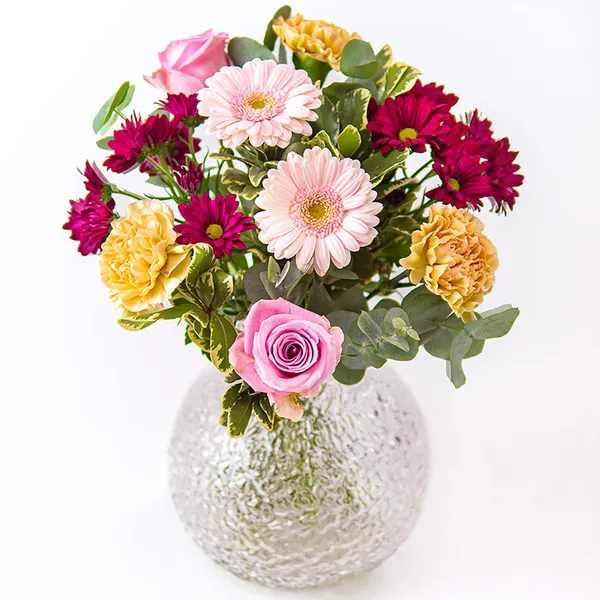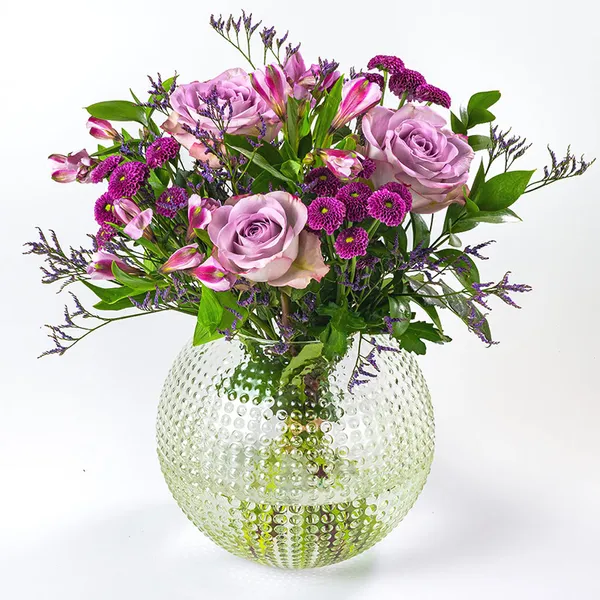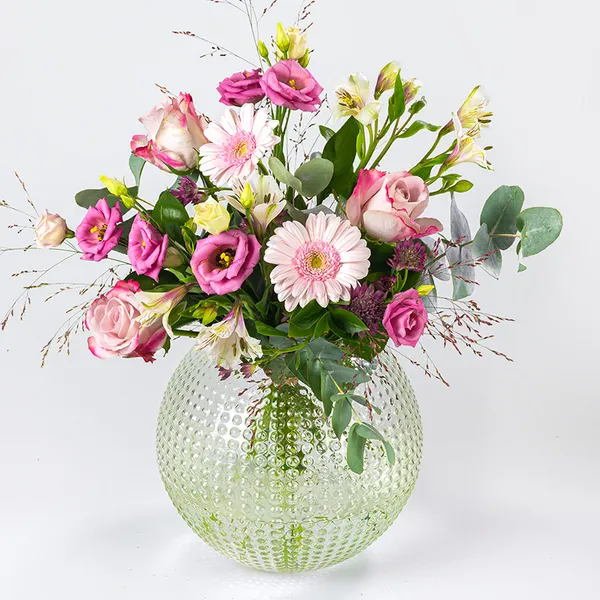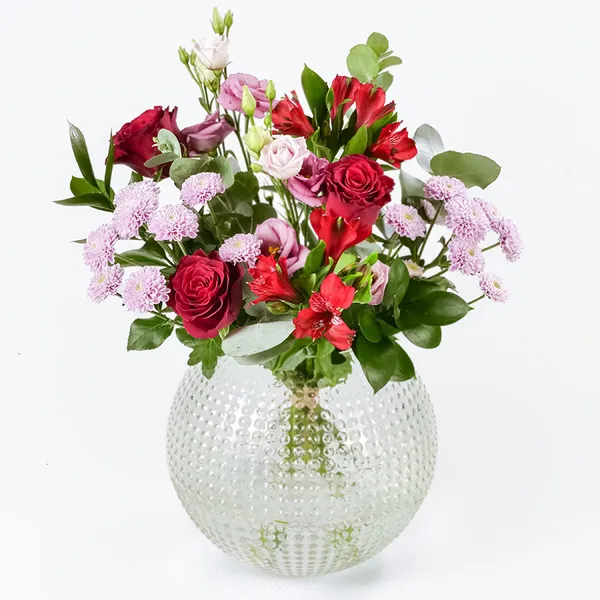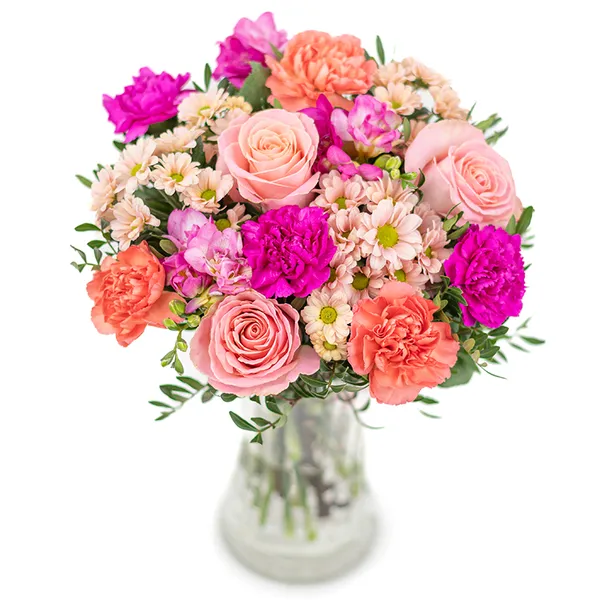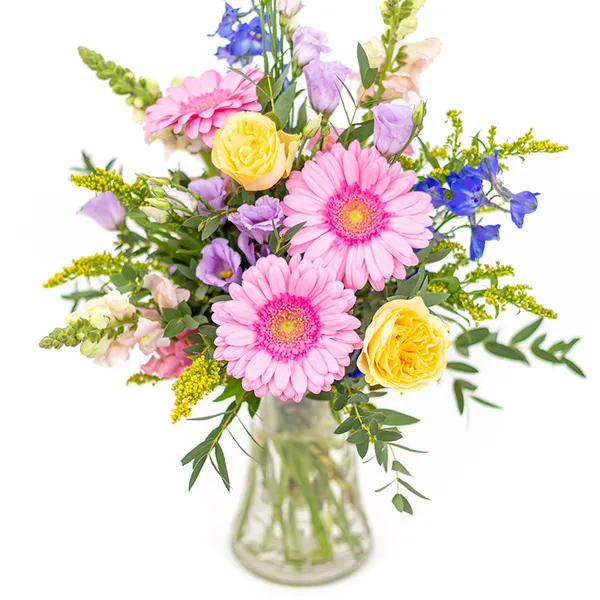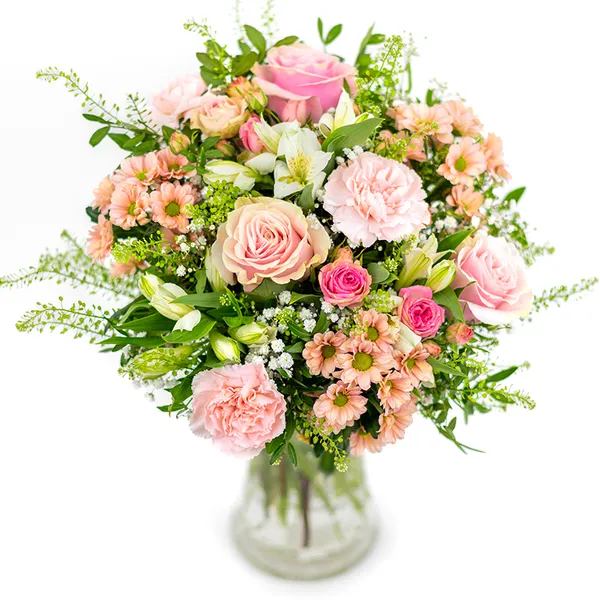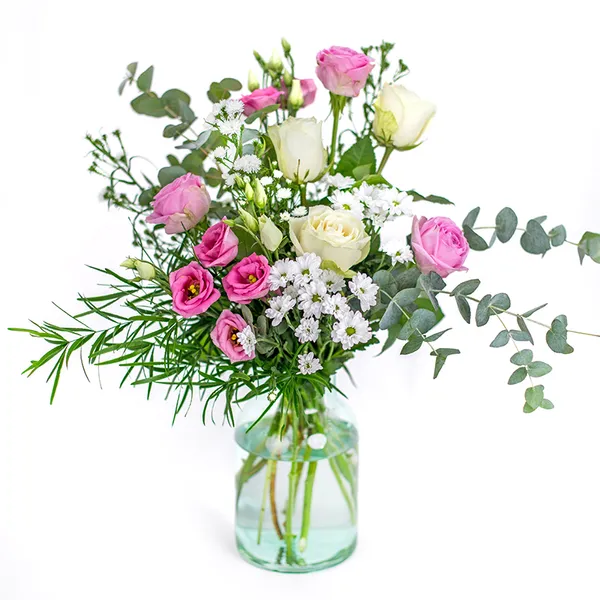The 5 Best Hayfever Flowers For The Pollen Season
The pollen season is upon us, and hay fever sufferer’s everywhere are bracing themselves — particularly those who love having flowers in their homes. But does having hay fever really mean you should avoid all flowers this summer? Absolutely not! In fact, there are plenty of flowers out there that won’t tickle your nose — let’s explore five of the best.
5 of the Best Low-Pollen Flowers
Nothing brightens our day like a beautiful bouquet of luxury flowers. But for those who face the yearly battle of itchy eyes, congested sinuses, and relentless sneezing, being around flowers (or in nature for that matter) can feel like a betrayal of the senses.
However, this year you can put down the tissues because we have some bloomin’ good news for you. There are multiple low-pollen blooms that are safe for people with hayfever to enjoy, which means you no longer have to avoid cut-flowers. Here are five of the best flowers for hay fever sufferers:
Not only are they classic, elegant, and produce a soft, sweet fragrance, roses are also hypoallergenic, meaning they won’t trigger any allergies. While they do release small amounts of pollen, roses are unlikely to cause hay fever symptoms. This makes roses a perfect, hay fever-friendly choice for gifting to friends and family, especially since they're one of the most popular flowers in our bouquets.
Symbols of elegance, wealth, and beauty, orchids are a flower steeped in years of history and culture. Not only do they have a low pollen count, but they are also one of the longest lasting cut flowers as well. This, combined with their exceptional longevity as cut flowers, makes them a perfect choice for brightening up a new home without triggering allergies.
When someone mentions spring, it’s impossible not to envisage the yellow flowers that brighten up living spaces, roadsides, and fields. However, spring also marks the start of the pollen season, and so for hayfever sufferers, daffodils can be seen as an omen of what’s to come. But don’t fret — daffodils can still be the perfect pick-me-up after winter. This is because they are insect-pollinated.
But why does this matter for hay fever sufferers? Well, wind-pollinated plants rely on large amounts of pollen being dispersed by the wind, and have an increased risk of causing allergies due to the particles that float in the air. So, if you are looking for the perfect hay fever-free flower, then insect-pollinated flowers, like daffodils, are usually a better choice. This is because their pollen is heavier, which makes it harder for it to enter our respiratory systems — thus making them a perfect choice for hay fever sufferers.
Similarly to daffodils, peonies rely on insects — mainly bees — for pollination. Peonies are particularly attractive to pollinators due to their brightly coloured petals and exposed centres. Peonies produce a stickier, heavier pollen that clings to insect bodies, ensuring efficient transfer between flowers. Moreover, peonies’ abundant petals act as traps for their own pollen. Their ruffle-like layers help prevent pollen from becoming airborne and minimise the symptoms and allergies that come from hay fever.
Carnations
These brightly coloured beauties have been cultivated for at least 2000 years and continue to bring a touch of elegance to any home or arrangement. Due to their heavier pollen grain and modern varieties (which have been bred to produce less pollen), carnations are great for anyone with allergies. Furthermore, their extended vase life adds another benefit to having these striking frilly flowers in your home or office.
Flowers to avoid
If you suffer from hay fever, we would recommend staying away from certain flower varieties. Some of the worst flowers for hay fever include lilies (due to their intense fragrance), chrysanthemums, and sunflowers (which have extremely high pollen counts), as well as gerberas (bright and colourful, but a pollen magnet!).
It’s essential to remember that individual reactions can vary, and so when choosing flowers for your home, you should see what works for you. What might be harmless to one person could be problematic for another.
Minimising Pollen at Home
With tree and grass pollen season now in full swing, transforming your home into a pollen-free home is a must for hay fever sufferers. Here are three tops tips on ways you can minimise pollen exposure indoors:
Keep flowers away from high-traffic areas
Strategic placement can make all the difference. Avoid placing flowers in small, unventilated rooms including your bedroom. While it’s always nice to wake up to a beautiful bouquet, pollen can shed from flowers and linger in the air, and no one wants to wake up in the middle of the night sneezing. It’s best to display your bouquet near an open window, external door, or somewhere with a slight breeze to disperse any allergens that may be present.
Change the water regularly
We recommend changing your flower arrangement’s water every few days and removing any dead foliage to reduce pollen and inhibit the growth of moulds and bacteria — which can exacerbate hay fever symptoms. Plus, clean, clear water is essential for flower longevity. If you would like to learn how you can enjoy your flowers for longer, check out some of our top flower care tips.
Remove stamens
If you're set on a specific flower but it has noticeable stamens (pollen-bearing male parts), carefully remove them with tweezers or small scissors before bringing them inside.
Scented vs. Unscented Flowers
Any flower or plant that produces pollen poses a threat to allergy sufferers. However, while the pollen count could be causing your symptoms, allergist experts reiterate that for some individuals, fragrant flowers may also be the reason behind your hay fever activating. The small airborne particles that are released from the flower can cause anything from sneezing to headaches to even aggravated asthma symptoms. If you are someone who is sensitive to perfumes, detergents, or candles then it's best to avoid highly fragrant blooms at home.
Our bouquets
Freshly cut flowers can offer more than just a low pollen count — they can brighten someone’s day. Whether it is red roses, peonies, carnations, or gerberas, we have it all. Here at Euroflorist, we offer a selection of beautiful bouquets that quickly become household favourites and will bring a smile to your face.

